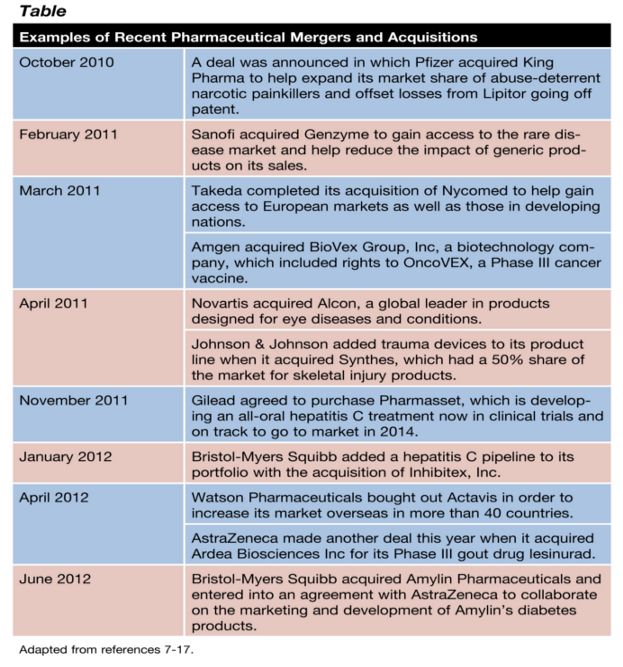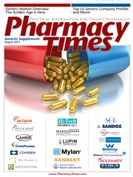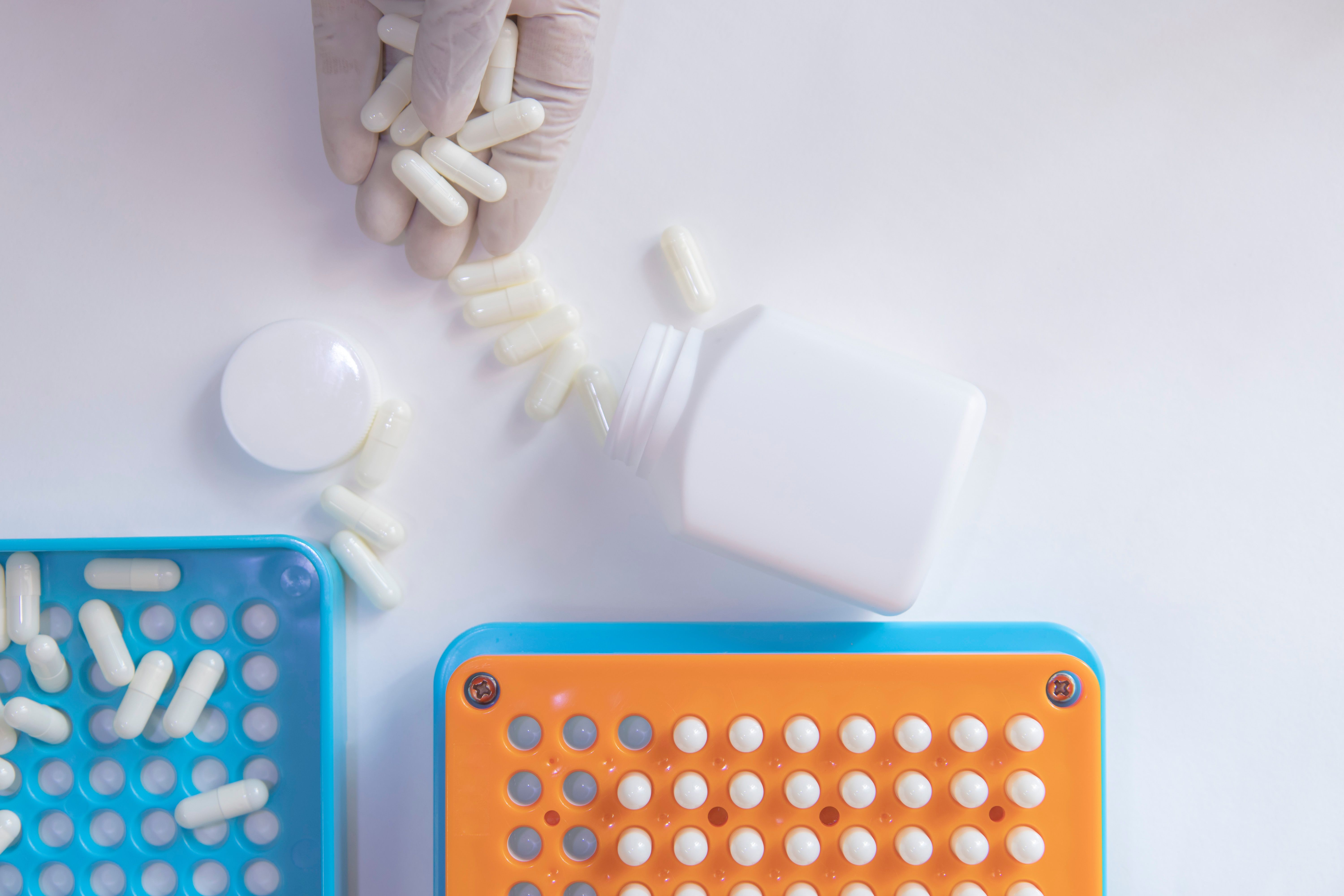Publication
Article
Generic Supplements
Generic Market Overview: Standing at the Top of the Patent Cliff
The generic marketplace remains dynamic and complicated, as patent expirations,interest in biosimilars, and international competition spur major changes.
The generic marketplace remains dynamic and complicated, as patent expirations,interest in biosimilars, and international competition spur major changes.
The year 2012 has brought us to the peak—or in reality, to the precipice—of a series of brand patent expirations that will bring marked changes to the pharmaceutical industry, in both the brand and generic markets. Many have referred to this phenomenon as the “patent cliff,” or “pharmageddon.” Brand name drugs have gone off patent in the past, but the current situation is notable because so many blockbuster drugs are nearly simultaneously joining the expiries list. Meanwhile, the rate of erosion is not being offset by the rate of discovery and production.
Some of the blockbuster drugs that came off patent last year include Pfizer’s Lipitor (atorvastatin), BristolMyers Squibb’s Plavix (clopidogrel), Forest Laboratories’ Lexapro (escitalopram), and AstraZeneca’s Seroquel (quetiapine). Many more are slated to come off patent this fall, including Merck & Co, Inc’s Singulair (montelukast), GlaxoSmithKline’s Advair (fluticasone and salmeterol), and Novartis’s Diovan (valsartan), which combined made up more than $10 billion in US sales in 2011.1
This situation coincides with a less than favorable global economic outlook, which has driven patients and drug developers to look for ways to cut costs. Pharmaceutical companies, and particularly the ones that market the brand name drugs going off patent, have been anticipating this event for several years. Some have undergone restructuring to cut costs and offset their market losses. These actions have resulted in more than 200,000 lost jobs in the industry within the past 3 years as well as company mergers and acquisitions that have increasingly gone abroad. In addition, some companies are investing in innovation with the hope of a brighter future, with many focused on specialty pharmaceuticals.
The question remains, what do all these changes mean for the generics marketplace and generic pharmaceutical companies in particular? One consequence, the opportunity to develop and market new, less expensive drug products, is already having an impact on patients’ wallets and generic companies’ bottom lines. Others, such as the role biosimilars will play in the future, remain to be seen.
Health Care Spending Trends
Total health care spending has increased significantly over the past decade. According to the US Government and Accountability Office (GAO), the United States spent about $172 billion on health care in 2001. Ten years later, that amount had nearly doubled, rising to $307 billion in 2010 and $320 billion in 2011.2
This increased spending can be attributed to several key factors, including the growing demand for health care due to population increases, changes in health care law, and the increasing number of aging patients with chronic diseases such as Alzheimer’s disease, high blood pressure, high cholesterol, osteoporosis, and diabetes. The use of prescription drugs goes hand in hand with this rising disease burden. More people growing older means more disease management, which in turn means more drugs and added costs.
Prescription drug spending was one of the drivers of the growth in health care spending until the early 2000s.2 Since then, the rate of increase has slowed somewhat from year to year. Last year, prescription drug usage saw a decline among certain key age groups. For example, there was a 3.1% decline in prescription sales in patients 65 years and older in 2011, with the most notable change being the reduced use of antihypertensives.3 Overall, the number of retail prescriptions fell 1.1% last year, although this trend did not hold for all age groups.3
According to the IMS Institute for Healthcare Informatics, the only group that increased drug utilization was 18-to-25-year-olds, who increased their use of medications by 2%, largely because of increased use of antidepressants and attention-deficit/hyperactivity disorder treatments. Despite this, it seems that the economy continues to strain many Americans, including older adults, often compromising their willingness or ability to adhere to medication regimens or follow-up with physicians.
The use of generic drugs has been impacted in recent years by a patient population seeking less expensive alternatives, government and private health plans that encourage their use, and the growing number of patent expirations.2 In 2010, generic drug sales brought in an estimated $170 billion worldwide, contributing to a compound annual growth rate of 9.7% in the past 5 years.4 In the United States, spending on generics increased by $5.6 billion in 2011.3
Lowering Health Care Costs
Because generic equivalents are less expensive alternatives, they play a huge role in lowering health care costs. The average retail price of a generic drug is 75% lower than the retail price of a brand name drug. The generic market makes up a much smaller portion of drug spending, despite the fact that generic medications outnumber branded products by far.5,6 The United States has one of the world’s largest generic drug markets, dispensing almost 80% of all prescriptions in the retail setting as generics in 2011.2-4 This proportion is expected to rise higher by 2015, driven in part by the patent cliff and also by strategies that third party payers, such as Medicare and private health plans, have put into place to encourage generic use.
According to the GAO, $1 trillion was saved by the US health care system between 1999 to 2010 through generic substitution. Examining generic medications that have entered the market since 2001, the Generic Pharmaceutical Association reported a total cost savings of more than $360 billion by the end of 2010. Patent settlements also contributed to cost savings, because 16 of the 22 new generic drugs that came out in 2011 were launched prior to patent expiration.6
Mergers and Acquisitions
To prepare for the loss in revenue from patent expirations, many brand name companies have been merging in the hopes of reducing competition or acquiring R&D pipelines. These mergers, acquisitions, and deals resulted in a shrinking of the number of competitors, an increase in the participating companies’ product lines or R&D pipelines for potential profit, and often decreases in workforce. The Table 7-17 highlights some recent mergers and acquisitions in the pharmaceutical industry.
Although many of these mergers have resulted in a loss of generic pharmaceutical companies, a few have strengthened their positions as well. The demand for generic drugs puts pressure on the generic industry to market drugs at the lowest price, which means producing them at the lowest cost. Mergers of generic companies can mean more resources to complete this often difficult task. In part due to its earnings from atorvastatin, Watson’s revenues in the first quarter of 2012 were $1.5 billion, an increase of 74% compared with its revenue of $877 million in the same quarter last year.18 This increase in net income allowed Watson to purchase Actavis on April 25, 2012.18
Acquiring and expanding will allow Watson to compete with other large generic companies such as Teva and Mylan. Teva, however, is prepared for competition, as it acquired Ratiopharm in 2010 and Cephalon for its stem cell treatments in 2011.19,20 These acquisitions have contributed to making Teva one of the largest generic pharmaceutical companies on the market.

International Competition
China has become an attractive destination for the those who are dealing with “pharmageddon.” Brand name companies and generic companies alike are seeking to expand to China due to the country’s growing economy. According to Nick Beckett, head of the life sciences industry group at CMS Cameron McKenna, “[China] is currently the 5th largest pharmaceutical market globally, predicted to become 2nd by 2015. Between 2007 and 2010, the generic market in China grew more than 25 percent a year on average and is forecast to grow about 14 percent a year in the coming few years.” 21
Recent changes to China’s patent laws are making some in the US generic pharmaceutical industry wary, however. These changes, announced on May 1, 2012, will enable China to bypass drug patents and produce generics via compulsory licenses, which the World Trade Organization allows to provide access to drugs during state emergencies, unusual circumstances, or in the interest of public health.22 China, which has seen a surge in HIV cases over the past several decades, is particularly interested in the antiretroviral tenofovir. The change in Chinese law comes after India granted its first compulsory license in March 2012.
“Public interest” is very much open to interpretation, and it is up to China to determine that status. Lisa Haile, co-chairwoman of the global life sciences sector at DLA Piper, noted, “Where do you draw the line? If the government decides that the public interest is simply in making expensive, life-saving drugs less costly, many products could be affected.” 23
Unlike before, the scope of compulsory licensing is now open to exports as well. The possible implications for our domestic generic market are unknown. This recent change could be yet another unprecedented event pharmaceutical companies will have to grapple with in the near future.
Biosimilars Emerging
The fast-approaching patent expirations, as well as the need for cost savings, is accelerating the development of a new market of interest—namely, biosimilars. Biologics are far more complex than the usual small molecule drugs and, as a result, are among some of the most expensive medications. In 2010, biologics became a $138 billion market and currently make up 16% of global pharmaceutical spending. This allows for biosimilars, or followon biologics, to provide a means for significant cost savings for payers and create revenue for the industry.
Some of the top-selling brands that are facing patent expiration include Herceptin (trastuzumab), Enbrel (etanercept), Humalog (insulin lispro), MabThera (rituximab), Remicade (inflixamab), and Aranesp (darbepoetin alfa).24 Development of some biosimilars is already under way, such as Teva’s version of Roche’s Rituxan. Pfizer and Blocon have partnered to work on insulins, and Boehringer Ingelheim is dedicating a division solely to biosimilars.24 Estimates from various studies predict a savings of $42 billion to $108 billion in the first 10 years of biogeneric market formation.6
Final Thought
The generic companies have much to gain due to the series of patent expirations that began last year. Generic drugs increasingly are being favored as a result of health care cost containment. Numerous drug companies have taken strides to reduce margins now with one eye on future growth by downsizing, merging with and acquiring other companies domestically and internationally, and focusing on biosimilars. As participants in these trends, generic companies should be well positioned to rise to the challenges presented by economic demands and manufacturing opportunities. All of these factors, along with China’s latest patent change and growing drug market, mean that the future of the generic pharmaceutical market in the United States will undoubtedly be complex and exciting.
Ms. Chen and Ms. Varghese are PharmD candidates at the Ernest Mario School of Pharmacy at Rutgers University, and Dr. Prescott is vice president of Clinical and Scientific Affairs for Pharmacy Times.
References
1. Crowley J. Best Selling Drugs going Off Patent in 2012. Seeking Alpha. 2012, Jan. Available at: http://seekingalpha.com/article/317708-best-selling-drugs-going-off-patent-in-2012
2. Dicken JE. Drug Pricing: Research on Savings from Generic Drug Use. United States Government Accountability Office. 2012, Jan. Available at:http://www.gao.gov/assets/590/588064.pdf
3. IMS Institute for Healthcare Informatics. Breakthrough Treatments, Fewer Doctor Office Visits, Reduced Use of Medicines Impact U.S. Healthcare in 2011. 2012 April. Available at: http://www.imshealth.com/portal/site/ims/menuitem.d248e29c86589c9c30e81c033208c22a/?vgnextoid=81c63fc68b876310VgnVCM10000076192ca2RCRD
4. Synergist. Impact of Patent Expiry on Global Generic Drugs Market: Trends, Opportunities and Challenges Post 2011. 2012, Jan. Available at: http://www.marketresearch.com/Synergyst-v3387/Impact-Patent-Expiry-Global-Generic-6745823/
5. Congressional budget office (CBO), Effects of Using Generic Drugs on Medicare’s Prescription Drug Spending (Washington, D.C.: September 2010).
6. The Generic Pharmaceutical Association. An Economic Analysis of Generic Drug Usage in the U.S. [Internet]. Washington; 2011 Sep. Available from http://www.gphaonline.org/about-gpha/about-generics/case/generics-providing-savings-americans.
7. Pettypiece S, Larkin C. Pfizer Acquires Pain Drug Maker King For $3.6 Billion. Bloomberg. 2010 Oct. Available from http://www.bloomberg.com/news/2010-10-12/pfizer-agrees-to-purchase-king-pharmaceuticals-for-3-6-billion-in-cash.html.
8. Novartis. Novartis completes merger with Alcon. 2011 Apr. Available from http://www.novartis.com/newsroom/media-releases/en/2011/1504841.shtml
9. Reuters. Sanofi completes Genzyme takover. 2011 Apr. Available from http://www.reuters.com/article/2011/04/09/us-genzyme-sanofi-idUSTRE7377H320110409
10. Hill A. Takeda completes Nycomed acquisition, installs new chief executive. InPharm. 2011 Mar. Available from http://www.inpharm.com/news/168465/takeda-completes-nycomed-acquisition-installs-new-chief-executive.
11. Reuters. Amgen Completes Acquisition of BioVex. 2011 Mar. Available from http://www.reuters.com/article/2011/03/04/idUS215875+04-Mar-2011+PRN20110304.
12. Connolly A, Nussbaum A. Johnson & Johnson Buys Synthes For $21.3 Billion To Boost Trauma Products. Bloomberg. 2011 Apr. Available from http://www.bloomberg.com/news/2011-04-27/j-j-agrees-to-buy-synthes-for-21-3-billion-in-cash-stock.html.
13. Pollack A, Merced M. Gilead to Buy Pharmasset for $11 Billion. New York Times. 2011 Nov. Available from http://dealbook.nytimes.com/2011/11/21/gilead-to-buy-pharmasset-for-11-billion/.
14. Bristol-Myers Squibb to Acquire Inhibitex. World Pharma News. 2012 Jan. Available from http://www.worldpharmanews.com/bms/1928-bristol-myers-squibb-to-acquire-inhibitex.
15. Jack A. BMS and AstraZeneca to acquire Amylin. Financial Times. 2012 Jun. Available from http://www.ft.com/intl/cms/s/0/2422b508-c2b0-11e1-8d12-00144feabdc0.html#axzz209XVyjZi.
16. Scott M. Watson to Buy Actavis for $5.9 Billion. New York Time. 2012 Apr. Available from http://dealbook.nytimes.com/2012/04/25/watson-to-buy-actavis-for-5-9-billion/
17. Connolly A. AstraZeneca’s Ardea Purchase May Be First Of New Deals. Bloomberg. 2012 Apr. Available from http://www.bloomberg.com/news/2012-04-23/astrazeneca-to-buy-ardea-biosciences-for-1-26-billion-1-.html
18. Isaacson J. Revenues fall off the patent cliff, rain down on generics firms. Newstatesmen. 2012 May. Available from http://www.newstatesman.com/blogs/business/2012/05/revenues-fall-patent-cliff-rain-down-generics-firms
19. Zacks Equity Research. Teva Acquires Ratiopharm. Zacks Investment Research. 2010 Aug. Available from http://www.zacks.com/stock/news/38578/teva-acquires-ratiopharm.
20. Teva. Teva Completes Acquisition of Cephalon. 2011 Oct. Available http://ir.tevapharm.com/phoenix.zhtml?c=73925&p=irol-newsArticle&ID=1617357&highlight=.
21. Beckett N. Drug firms must make quick moves. China Daily (Europe Ed.). 2012 Jul. Available from http://europe.chinadaily.com.cn/epaper/2012-07/06/content_15554810.htm
22. Gaffney A. New Chinese Patent Rules Could Make Country Compulsory Licenser to the World. Regulatory Focus. 2012 Jun. Available from http://www.raps.org/focus-online/news/news-article-view/article/1743/new-chinese-patent-rules-could-make-country-compulsory-licenser-to-the-world.aspx
23. China’s Compulsory License Rule Has Drug Cos. On Edge. Adli Law Group P.C. 2012 Jun. Available from http://www.adlilaw.com/chinas-compulsory-license-rule-has-drug-cos-on-edge/
24. Rickwood S, Lervolino A. Shaping the biosimilars opportunity: A global perspective on the evolving biosimilars landscape.[Internet]. London; 2011 Dec. Available from http://www.imshealth.com/ims/Global/Content/Insights/IMS%20Institute%20for%20Healthcare%20Informatics/Documents/Biosimilars_White_Paper.pdf.







